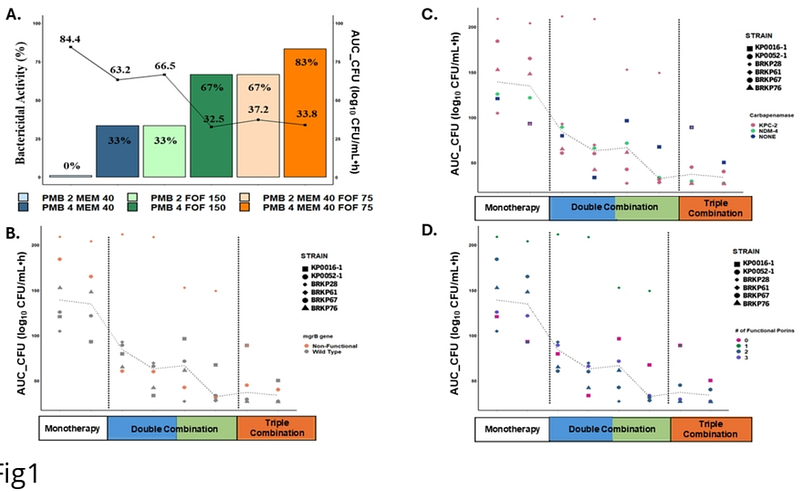A Mechanism Based Pharmacokinetic/Pharmacodynamic Analysis of Polymyxin B-Based Combination Therapy Against Carbapenem-Resistant Klebsiella pneumoniae Isolates with Diverse Phenotypic and Genotypic Resistance Mechanisms

A Mechanism Based Pharmacokinetic/Pharmacodynamic Analysis of Polymyxin B-Based Combination Therapy Against Carbapenem-Resistant Klebsiella pneumoniae Isolates with Diverse Phenotypic and Genotypic Resistance Mechanisms
Mahadevan, R.; Garcia, E.; Sharma, R.; Qiu, H.; Elsheikh, A.; Parambi, R.; Abboud, C. S.; Pasteran, F.; Ramirez, M. S.; Kaye, K. S.; Bonomo, R. A.; Rao, G. G.
AbstractIncreased resistance to {beta}-lactams/{beta}-lactamase inhibitor by mutations in {beta}-lactamases gene, porin mutations and efflux pumps complicates the management of carbapenem-resistant Klebsiella pneumoniae (CRKP). Polymyxin B (PMB) based combination therapy is considered as a best alternative treatment for those middle and low-income countries that cannot access to the latest medicines. Its crucial to know both phenotypic and genotypic characteristics of a pathogen to understand the killing effect of each drug and its combinations. Hence, our objective of this study was to incorporate mechanistic insights gained from resistance mechanisms to develop a mechanism based pharmacokinetic/pharmacodynamic model (MBM). Six clinical CRKP isolates were used for static concentration time kill (SCTK) assays to evaluate the rate and extent of killing by monotherapy, double and triple combinations using PMB, meropenem and fosfomycin. A MBM was developed using the SCTK data in S-ADAPT. The MBM estimated lower maximum killing rate constant of PMB (3.61 h-1) in an isolate with non-functional MgrB and high-level phenotypic resistance. Based upon model discrimination and PMBs outer membrane disruption, mechanistic synergy was included in 3 isolates which has porin mutations. Mechanistic synergy of PMB was 83-88% with meropenem and 81-98% with fosfomycin. The PMB concentration required to achieve 50% of synergy was 0.48-0.64 mg/L. Simulations with a lower PMB regimen (1mg/kg q12h) and fosfomycin (8g q8h) showed >73% reduction in area under the bacterial load-versus-time curve for four isolates. The triple combination showed 67.7% reduction in non-carbapenamase producing isolate. This study demonstrates that a low dosing regimen of PMB can produce synergistic effects in combination therapy and might be effective in managing infections caused by CRKP, including PMB resistant isolates.